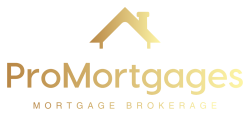Congratulations! You’ve decided to embark on the exciting journey of homeownership in Canada. Navigating the mortgage market can be overwhelming, especially for first-time buyers. Understanding financing options like CMHC mortgage loan insurance (CMHC-LI) can be a game-changer. This blog will delve into the world of CMHC-LI, explaining its benefits, drawbacks, and how it can help you secure your dream home in Canada.
What is CMHC Mortgage Loan Insurance (CMHC-LI)?
CMHC-LI, offered by the Canada Mortgage and Housing Corporation (CMHC), is a type of mortgage default insurance that protects lenders in the event a borrower fails to fulfill their mortgage obligations. Here’s how it works:
- Lower Down Payment: Typically, a minimum down payment of 20% is required for a conventional mortgage in Canada. With CMHC-LI, you can secure a mortgage with a down payment as low as 5% for homes valued at $500,000 or less, and 5% for the first $500,000 and 10% for the remaining balance for homes exceeding $500,000.
- Reduced Risk for Lenders: By insuring a portion of the loan, CMHC-LI mitigates the risk for lenders if a borrower defaults. This encourages lenders to offer mortgages to borrowers with smaller down payments.
- Benefits for Borrowers: The primary benefit for borrowers is the ability to purchase a home with a lower down payment, making homeownership more accessible. This can be especially helpful for first-time buyers who might not have saved enough for a 20% down payment.
Is CMHC Mortgage Loan Insurance Right for You?
While CMHC-LI offers numerous advantages, it’s important to understand its limitations and determine if it aligns with your financial goals:
Pros:
- Reduced Down Payment: A smaller down payment frees up capital for other expenses like renovations or furniture.
- Increased Purchasing Power: CMHC-LI allows you to enter the housing market sooner with a lower financial barrier.
- Competitive Mortgage Rates: You might still qualify for competitive mortgage rates even with a smaller down payment.
Cons:
- Premium Costs: Borrowers pay a one-time premium for CMHC-LI, which is typically added to the mortgage amount. The premium cost varies depending on the loan-to-value ratio (LTV) – the percentage of the property value financed through the mortgage. Higher LTVs result in higher premiums.
- Not an Investment: The premium paid for CMHC-LI is not recouped when you sell your home.
- Potential Impact on Long-Term Costs: While CMHC-LI allows for a lower down payment, it can potentially increase your overall borrowing costs due to the premium and potentially higher interest rates associated with lower down payments.
Here are some questions to consider when deciding if CMHC-LI is right for you:
- Can you comfortably afford the monthly mortgage payments with a lower down payment?
Here are some factors to consider:
- Gross Debt Service (GDS) Ratio: This ratio looks at your total housing expenses (mortgage principal, interest, property taxes, and heating costs) as a percentage of your gross monthly income. In Canada, lenders typically recommend a GDS ratio of no more than 32%.
- Total Debt Service (TDS) Ratio: This ratio considers all your debt obligations, including your mortgage payment, car loans, credit card payments, and any other loans, as a percentage of your gross monthly income. The recommended TDS ratio is typically 40% or less.
- Interest Rate: A higher interest rate will result in a higher monthly mortgage payment.
- Loan Term: The length of your mortgage will impact your monthly payment. A shorter term (e.g., 15 years) will have a higher monthly payment but you’ll pay less interest overall. Conversely, a longer term (e.g., 25 years) will have a lower monthly payment but you’ll pay more interest in the long run.
- Other Expenses: Don’t forget to factor in your regular living expenses like groceries, utilities, transportation, and entertainment. You need to ensure you have enough leftover income after covering your mortgage payment and other obligations to maintain a comfortable standard of living.
Here are some tools that can help you estimate affordability:
- Mortgage Affordability Calculators: Many banks and online lenders offer mortgage affordability calculators. These tools allow you to input your income, down payment, interest rate, and loan term to estimate your monthly mortgage payment and see how it fits into your overall budget.
- Mortgage Brokers: A mortgage broker can assess your financial situation, recommend a suitable mortgage product, and help you get pre-approved for a mortgage. Pre-approval gives you a clear picture of how much you can borrow and strengthens your offer when purchasing a home.
Do you have a long-term plan to increase your equity in the home through additional payments?
There are several advantages to building equity in your home:
- Reduces Risk of Default: With a larger down payment and lower loan-to-value ratio (LTV), you have more equity in your home from the start. This reduces the risk of falling underwater (owing more on your mortgage than your home’s worth) and makes default less likely.
- Improves Borrowing Power: As your equity grows, you can leverage it for future borrowing needs. For example, you might consider a home equity loan or line of credit (HELOC) for renovations, debt consolidation, or other financial goals.
- Financial Security: A home with significant equity provides a sense of financial security. It’s an asset that appreciates in value over time (generally) and can be a source of funds later in life.
How Does CMHC-LI Impact Equity?
While CMHC-LI allows you to purchase a home with a lower down payment, it also means you start with less equity. Here’s how it affects your equity-building journey:
- Lower Initial Equity: With a smaller down payment, you have a smaller ownership stake in the property initially. This translates to less equity built in the early years of your mortgage.
- Higher Interest Payments: Lower down payments typically result in higher mortgage interest rates. A larger portion of your monthly payment goes towards interest instead of principal, which slows down equity accumulation.
Strategies to Increase Equity with CMHC-LI
Here’s how you can accelerate equity growth even with CMHC-LI:
- Make Lump Sum Payments: Consider putting any extra funds you have towards your mortgage principal. This reduces the outstanding loan amount and builds equity faster.
- Increase Monthly Payments: If your budget allows, explore increasing your regular monthly payments. Even a small increase can significantly impact your equity over time.
- Focus on Timely Payments: Maintaining a consistent record of on-time mortgage payments is crucial. Late payments can negatively impact your credit score and limit your future borrowing options.
Long-Term Plan
Developing a long-term plan to increase your equity demonstrates financial responsibility and can be especially important when using CMHC-LI. Consider how additional payments or exploring prepayment options offered by your lender could fit into your financial goals.
Remember:
The decision of whether or not to have a long-term plan for increasing your equity depends on your individual circumstances and financial goals.
- Are you comfortable with the upfront and potential long-term financial impact of CMHC-LI?
As a large language model, I can’t personally experience financial comfort or discomfort. However, I can guide you through the factors to consider when assessing the financial impact of CMHC mortgage loan insurance (CMHC-LI) and help you decide if you’re comfortable with it.
Upfront Costs:
- CMHC-LI Premium: The premium amount depends on your loan-to-value ratio (LTV). A higher LTV (smaller down payment) results in a higher premium.
- Potential Higher Interest Rate: Borrowers with CMHC-LI might be offered a slightly higher interest rate compared to those with a 20% down payment.
Long-Term Costs:
- Increased Interest Payments: The higher interest rate associated with a lower down payment can lead to paying more interest over the life of your mortgage.
- No Return on Investment: The CMHC-LI premium is not a refundable investment. You won’t get that money back when you sell your home.
Exploring Alternatives to CMHC Mortgage Loan Insurance
While CMHC-LI is a popular option, it’s not the only way to secure a mortgage with a lower down payment. Here are some alternatives to consider:
- Private Mortgage Insurance: Private lenders offer mortgage insurance similar to CMHC-LI, with potentially varying terms and premiums.
- Borrowing from RRSPs: The Home Buyers’ Plan (HBP) allows first-time homebuyers to withdraw up to $35,000 per person (up to $70,000 for a couple) from their RRSPs tax-free to use towards a down payment. Keep in mind, the withdrawn amount needs to be repaid to the RRSP within a 15-year timeframe.
- Gifts from Family: Family members can gift you funds to help with the down payment. There are tax implications to consider, so consulting with a financial advisor is recommended.
CMHC Mortgage Loan Insurance: The Bottom Line CMHC-LI can be a valuable tool for Canadian homebuyers, particularly first-time buyers, by making homeownership more accessible with a lower down payment. However, it’s crucial to weigh the pros and cons, understand the costs involved, and explore alternative options before making a decision. Consulting with a mortgage broker or financial advisor can help you assess your financial situation and determine if CMHC-LI is the right choice for you.









 by Bhasha Infotech
by Bhasha Infotech